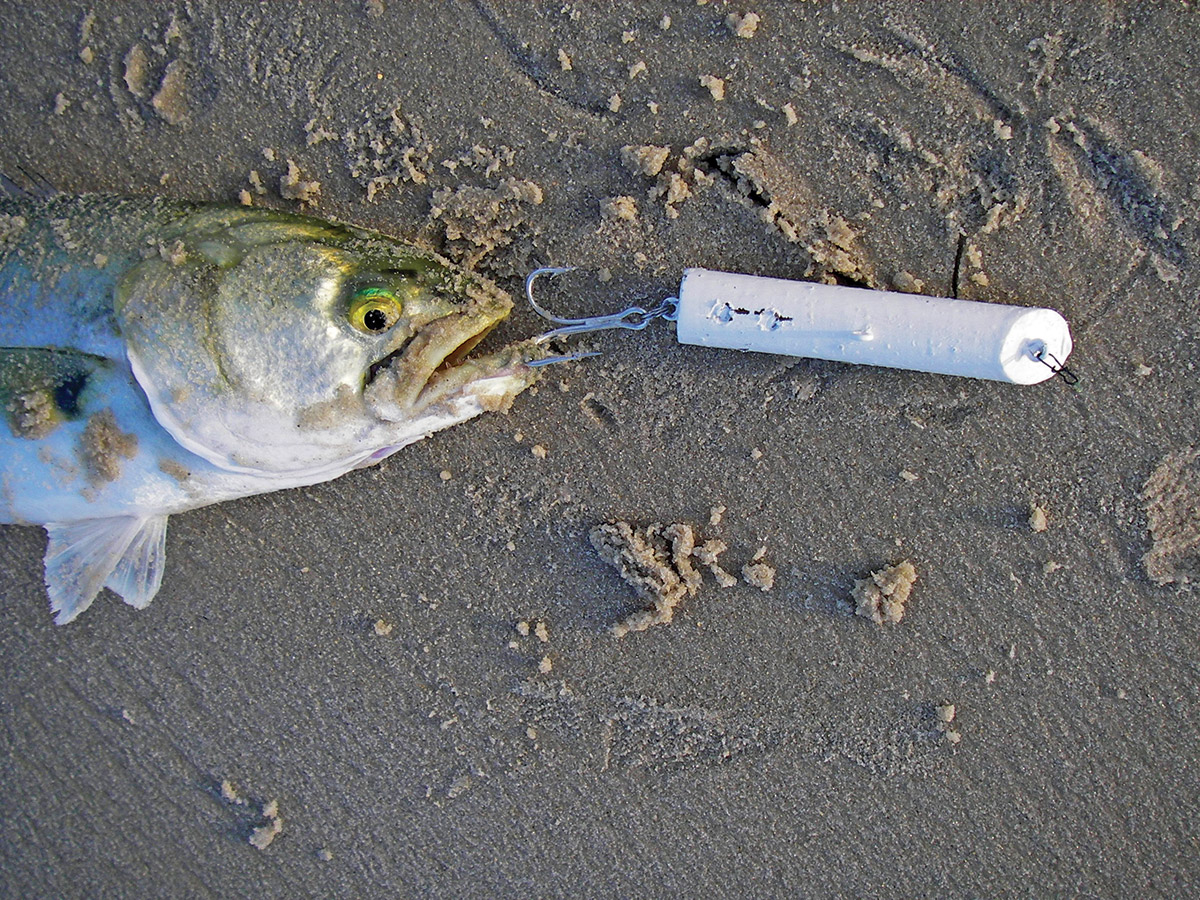
Bluefish can be just as fussy as stripers when they want to be. These tips help make them more cooperative.
It’s no secret that bluefish possess a wicked set of teeth and they are not shy about using them. Put a finger in the wrong place when handling a gator blue and you might end up shortening a digit or two. It’s that reputation that leads most anglers to rely on a wire leader when targeting blues. For those tossing costly plugs, it is seen as added insurance against having your favorite top water bitten off. That insurance however, can be costly when it comes to putting fish in the boat or on the beach. I have seen too many times when bluefish would turn their noses up at any offering tethered to wire, bait and lures included. I have also been on the right side many times when those fishing with mono leaders easily outfished those with wire. A wire leader will negatively affect the presentation of your bait and lure. While there are times when you can connect your lure to a tow cable and have a bluefish hit it, they are rarer than you think.
Heavy mono is less visible than wire and can take more abrasion than most people realize. I have caught many, many blues on 40- and 50-pound Ande mono leaders, although some anglers favor monofilament as heavy as 80-pound test. You may get bitten off on occasion, and you will likely have to cut back or replace a chafed leader every few fish or so, depending on the size and aggressiveness of the fish that day.
The type of lure you are using can have a lot to do with extending the life of your mono leader. I have had 20- and 30-fish days where I never changed or even cut back my leader when using diamond jigs with tubes, and plugs like pencil poppers and most standard poppers. Since bluefish will almost always strike the back end of a lure, unlike striped bass that will hit the front of most plugs (needlefish plugs being one exception), your lure serves as a buffer between the razor sharp teeth and your leader. The snap at the head of your plug provides additional insurance. Diamond jigs with tubes give you an excellent handle to pick up your blue, and if you remove the head hook on a popper or pencil popper, the plug also makes a great handle for landing or unhooking your fish.
Pink Ande is one of the more abrasion resistant monos and makes ideal leader material. If you don’t mind spending the extra bucks, fluorocarbon, which is less visible and also has better abrasion resistance than most monos, could give you an edge when the fish are especially fussy or in really clear water. I never see any sense in using a leader less than 30 inches and prefer 36 inches for most surf work, and also when fishing from a boat. A high quality swivel goes on one end and a plain snap on the other. I shy away from snap swivels on the lure because of its higher profile, which might discourage a fussy blue or any bass that elbows into the fray. The less hardware the better. You can also opt for a much longer shock leader, which you can connect to your braid via a double surgeons knot. When using leaders of 60-pound test or more, you will do better with an Albright knot. I always double my braid regardless of what knot I am tying.
Braided lines are so sensitive that at times you’ll swear you can “feel” a bluefish just looking at the bait. They are also extremely soft and supple and enhance the presentation of a bait as it floats or sinks in a chum slick or as a live bait works its magic in the depths. Super-braid lines are a great choice when fishing baits deep into the water column, when deep jigging and when casting to surface-crashing blues. Because the line has minimal stretch, setting the hook is instantaneous. These super sensitive lines also allow you to feel even the slightest hit or pickup. Despite their reputation as violent and aggressive feeders, bluefish will sometimes take a bait so gently that all you will feel is a slight tap that you would never notice with mono.




